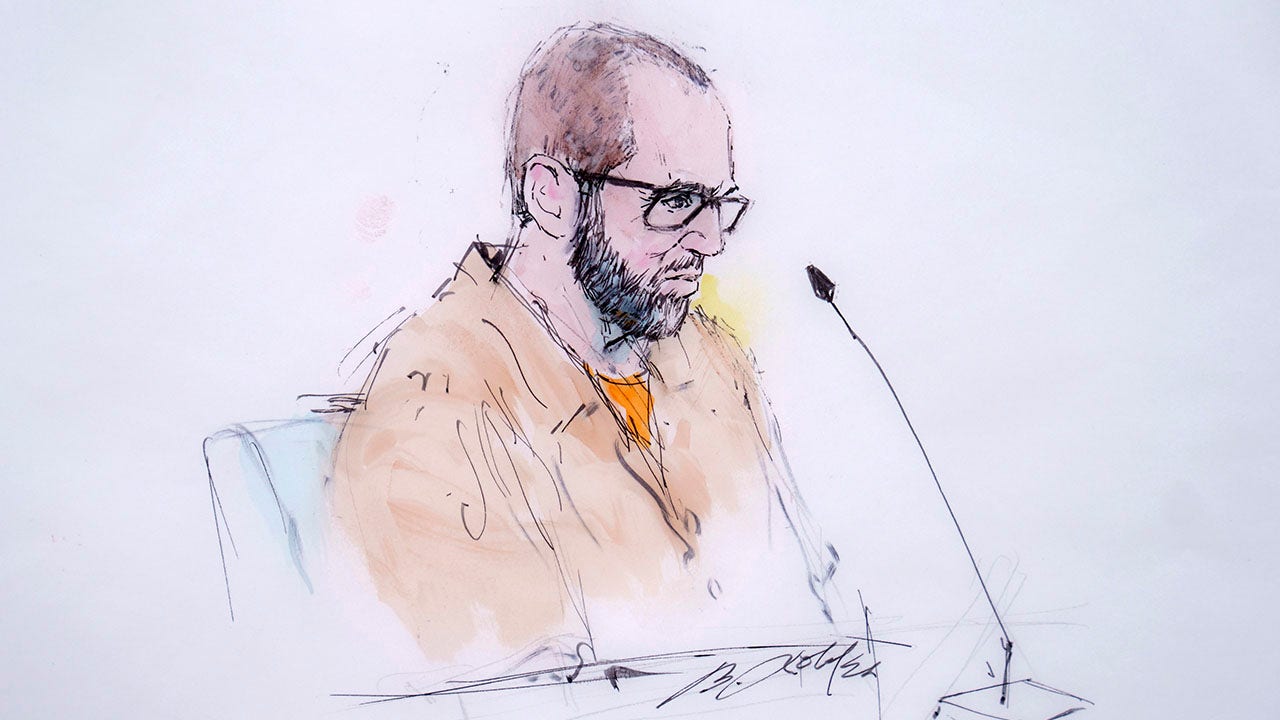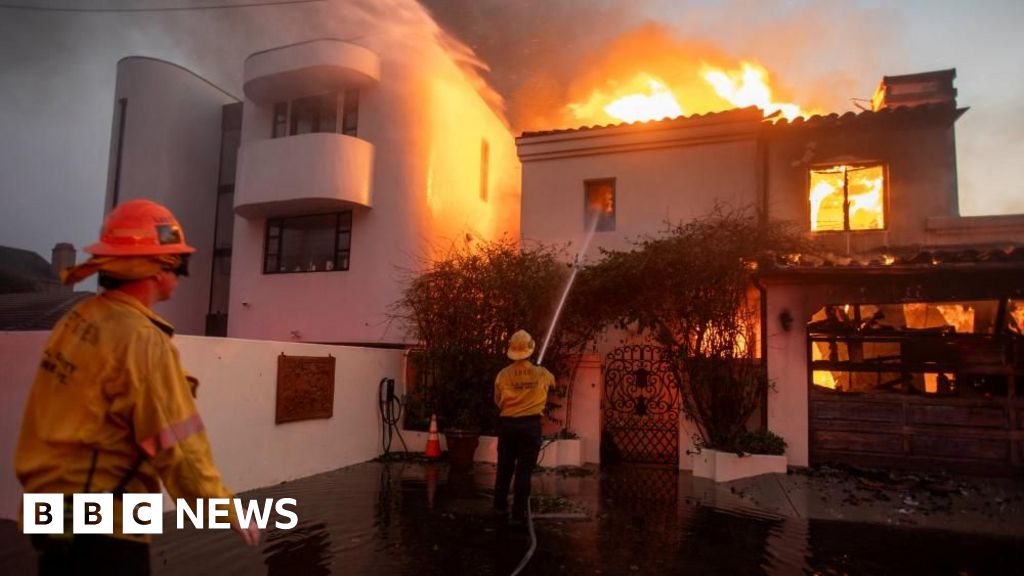San Diego, CA
Opinion: Let’s help Alzheimer’s patients manage their own lives with dignity

As we mark Alzheimer’s Awareness Month during September, we honor the millions of Americans and their families navigating the profound challenges of this devastating disease. Yet, amidst our awareness, we must confront a harsh reality: California’s Medical Aid in Dying (MAID) law currently excludes those who may need it the most — individuals in the early to mid-stages of Alzheimer’s disease who still possess cognitive capacity.
In 2020, roughly 720,000 Californians, or 12 percent of those over 65, were living with Alzheimer’s. This number will rise as the size of this age group continues to increase. Despite this growing crisis, our laws fail to provide a compassionate option for those facing the terrifying loss of cognitive function. Many people in the early to mid-stages of Alzheimer’s retain the mental ability to make informed decisions about their end-of-life care but live in fear of a future where that ability is lost. They are aware of what lies ahead — a slow decline into confusion and dependency. Allowing these individuals access to California’s Medical Aid in Dying would enable them to make a proactive, dignified choice about their end-of-life care, preserving their autonomy.
California’s End of Life Option Act, passed in 2016, was a significant step forward in providing terminally ill adults with the choice to end their lives peacefully and on their own terms. However, the law’s requirement for mental competence at the time of request, and the ability to self-administer the medication, effectively excludes Alzheimer’s patients, whose cognitive decline is a hallmark of their illness. While Alzheimer’s is undeniably a terminal illness, its progression is unpredictable, making it nearly impossible for patients to time a request for California’s Medical Aid in Dying before losing their decision-making capacity.
This is more than a legal issue — it is a moral one. By excluding those with Alzheimer’s from accessing California’s Medical Aid in Dying, we are denying them the right to die with dignity, forcing them to endure a prolonged and often agonizing decline. My mother was among those denied this choice. Diagnosed with Alzheimer’s, she made the brave decision to travel to Switzerland, where she could end her life on her terms, with dignity, and surrounded by her daughters. The fact that she had to leave her home and country to achieve this is a travesty. No one should have to cross international borders to die with dignity.
California has long been a leader in end-of-life care, but it is time to extend this compassion and dignity to individuals with Alzheimer’s disease. We must revise the End of Life Option Act to allow those in the early to mid-stages of Alzheimer’s, who still have cognitive capacity, to qualify for California’s Medical Aid in Dying. Many people with dementia would prefer a peaceful, dignified death over years of decline in a care facility, even if it means giving up good days to avoid bad years. They deserve the right to make this choice.
My mother’s journey to Switzerland was not just an act of self-determination; it was an indictment of a system that forced her to leave her home to die peacefully. It’s time to change the law so that people like my mother can choose to die with dignity in their own homes, surrounded by loved ones, without the need for international travel. We owe it to those facing the devastating reality of Alzheimer’s to provide them with the same end-of-life choices available to others with terminal illnesses.
This Alzheimer’s Awareness Month, let’s take action. It’s time to ensure that those with Alzheimer’s can live their final days with dignity, compassion and control.
Golemb is a founding member of A Better Exit, a nonprofit dedicated to expanding California’s End of Life Option Act. She lives in Kensington.

San Diego, CA
Mountain West men’s basketball power rankings: Utah State, San Diego State, Boise State lead the way

In what will be the biggest day of the Mountain West men’s basketball season to date, Saturday looms large for all six of the conference’s top contenders.
The action-packed day begins with New Mexico (13-3, 5-0) hosting San Diego State (10-3, 3-1) at 11 a.m. Mountain time. UNLV (9-6, 3-1) and Colorado State (9-6, 3-1) will meet in Fort Collins at 2 p.m. with Boise State (12-4, 4-1) and No. 25 Utah State (15-1, 5-0) closing the night at Dee Glen Smith Spectrum.
In the latest NCAA Tournament projection from ESPN’s Joe Lunardi, the MWC remained a two-bid league with Utah State (seven seed) and San Diego State (eight seed) earning spots. New Mexico was listed among Lunardi’s first eight out.
Here is a look at our midseason Mountain West power rankings.
Last result: 85-78 win at San Jose State (Tuesday)
Season record: 15-1, 5-0
Analysis: Utah State finally cracked the AP top 25 in the latest poll. Other than a 75-73 loss to Big West-leading UC San Diego, the Aggies have been perfect this season under first-year head coach Jared Calhoun.
Up next: Saturday vs. Boise State, 7 p.m., CBS Sports Network
Last result: 67-38 home win over Air Force (Wednesday)
Season record: 10-3, 3-1
Analysis: The Aztecs held a seven-point lead over Utah State with 90 seconds remaining before losing on a late Tucker Anderson 3-pointer. San Diego State has bounced back nicely with convincing wins over Boise State and Air Force.
Up next: Saturday at New Mexico, 11 a.m., CBS
Last result: 81-59 home win over UNLV (Tuesday)
Season record: 12-4, 4-1
Analysis: Boise State played arguably its best game of the season against UNLV, shutting down Dedan Thomas Jr. while getting strong offensive contributions from seven different players. When the Broncos’ offense is clicking, few MWC teams can match their firepower.
Up next: Saturday at Utah State, 7 p.m., CBS Sports Network
Last result: 61-53 win at Wyoming (Tuesday)
Season record: 13-3, 5-0
Analysis: Despite a strong body of work, the Lobos sit way down at No. 67 in the NET Rankings. A victory over San Diego State would provide a major boost to New Mexico’s NCAA Tournament resume.
Up next: Saturday vs. San Diego State, 11 a.m., CBS
Last result: 91-64 home win over Fresno State (Tuesday)
Season record: 9-6, 3-1
Analysis: The Rams have feasted on the bottom of the conference with victories over winless Fresno State, Nevada and San Jose State. Senior swingman Nique Clifford remains one of the MWC’s top players and is averaging a double-double at 16.6 points, 10.3 rebounds and 3.4 assists.
Up next: Saturday vs. UNLV, 2 p.m., Mountain West Network
Last result: 81-59 loss at Boise State (Tuesday)
Season record: 9-6, 3-1
Analysis: UNLV took a step back Tuesday in a non-competitive loss at Boise State. The Rebels have one of the conference’s best players in Dedan Thomas Jr., but the sophomore point guard needs more help.
Up next: Saturday at Colorado State, 2 p.m., Mountain West Network
Last result: 82-81 overtime loss at New Mexico (Jan. 4)
Season record: 8-7, 0-4
Analysis: It’s been a nightmare start to MWC play for the Wolf Pack, who have lost their four conference games by 11 combined points. With upcoming games against Fresno State, Air Force and San Jose State, Nevada has a chance to get its season back on track.
Up next: Saturday at Fresno State, 5 p.m., Mountain West Network
Last result: 61-53 home loss to New Mexico (Tuesday)
Season record: 9-7, 2-3
Analysis: The Cowboys were outscored 43-21 after halftime in Tuesday’s loss to New Mexico. Wyoming does hold a three-point win over Nevada, but the Cowboys are staring at a tough upcoming schedule with a home game against Colorado State sandwiched between road trips to Boise and Las Vegas.
Up next: Jan. 14 at Boise State, 7 p.m., Mountain West Network
Last result: 85-78 home loss to Utah State
Season record: 7-10, 0-5
Analysis: Unlike the MWC’s bottom two teams, the Spartans have been quite competitive this season with single-digit losses to New Mexico, Boise State, UNLV and Utah State. Senior guard Josh Uduj, a Utah State transfer, is averaging 16.8 points per game for San Jose State.
Up next: Saturday at Air Force, 1 p.m., Mountain West Network
Last result: 91-64 loss at Colorado State (Tuesday)
Season record: 4-12, 0-5
Analysis: The Bulldogs have dropped 10 of their last 11 games following a 3-2 start to the season. First-year head coach Vance Walberg has his work cut out for him.
Up next: Saturday host Nevada, 5 p.m., Mountain West Network
Last result: 67-38 loss at San Diego State (Tuesday)
Season record: 3-12, 0-4
Analysis: Air Force was the victim of a 44-4 scoring run during Tuesday’s loss. That is … not good.
Up next: Saturday vs. San Jose State, 1 p.m., Mountain West Network
San Diego, CA
Annie Crowell Kuzminsky

Annie Crowell Kuzminsky
OBITUARY
Anne (Annie) Kuzminsky, beloved wife, mother, and sister passed away peacefully surrounded by her family, after a courageous battle with pancreatic cancer. She was 63.
Annie is survived by her husband Larry, her son Steven, her daughter Charlotte, her son Jack (Alex), her siblings Steven (Liz) Crowell of Houston, Texas; her brother Richard (Allison) Crowell of Pacific Palisades, California; her sister Karen (Gary) Wagner of Manhattan Beach, California; and her sister Catherine Crowell of Omaha, Nebraska.
Annie was born in Altadena, CA to James and Alice Crowell and grew up in San Mareno, CA. She attended college at Santa Clara University and graduated with a bachelor’s degree in accounting. Annie then moved to San Diego, CA where she met and married Larry Kuzminsky in 1989.
While residing in San Diego, Annie worked for several years with the accounting firm of KPMG and obtained her CPA. She next worked for First National Bank for several years before leaving to spend more time with her children and work part time for 20 years as a consultant for Madison Square Properties. Annie was not tempted by the corporate ladder and received satisfaction from her work relationships and doing her job well.
Annie loved being a mom and raising her three children. She helped out at the elementary school, and later enjoyed going to the many soccer games, baseball games, and track meets they participated in. Annie also loved animals. As a teenager she talked her parents into having a dog (Mitsy) and cats (Spido and Dido). More recently Annie enjoyed fostering kittens which inevitably led to the adoption of several of them. Aside from pets, one of her more memorable experiences was a safari trip to Africa.
Annie’s favorite place was the family house at Capistrano Beach. She had many fond memories of get togethers there with college, work and neighborhood friends. During family trips, she enjoyed watching the kids play, walking on the beach looking for glass, and seeing the beautiful sunsets. It was a great place to relax.
Annie had a great laugh and was one of a kind in the best way. Her moral compass was set to “true north” of caring and doing right. Annie was always her authentic self and her friends and family loved her for it. She was a realist but had a knack for looking on the bright side. That was her strength, but the cancer took all she had. She has earned her rest but will be greatly missed.
San Diego, CA
Gonzaga’s Michael Ajayi ruled out vs. San Diego

The Gonzaga men’s basketball team will be without two players for Wednesday night’s matchup against San Diego at the McCarthey Athletic Center.
Michael Ajayi and Jun Seok Yeo were ruled out for the game against the Toreros due to illness, per the school.
Ajayi is coming off a 15-point outing in the Bulldogs’ 96-68 win over Loyola Marymount last Saturday. The 6-foot-7 senior is averaging 6.6 points and 5.3 rebounds per game. Ajayi made 12 consecutive starts before coming off the bench against Portland and LMU.
Yeo, a 6-foot-8 junior, has appeared in eight games this season, averaging 3.9 minutes in those contests. He scored a season-high eight points in Gonzaga’s 113-54 victory over UMass-Lowell. Yeo also scored five points in just three minutes against Bucknell.
Gonzaga hopes to be fully healthy for an impending matchup against Washington State set for this Saturday at the Kennel (6 p.m. PT/9 p.m. ET).
MORE GONZAGA NEWS & ANALYSIS
FOLLOW US ON SOCIAL MEDIA
Continue to follow our Gonzaga coverage on social media by liking us on Facebook and following us on Instagram and Twitter.
-

 Business1 week ago
Business1 week agoThese are the top 7 issues facing the struggling restaurant industry in 2025
-

 Culture1 week ago
Culture1 week agoThe 25 worst losses in college football history, including Baylor’s 2024 entry at Colorado
-

 Sports1 week ago
Sports1 week agoThe top out-of-contract players available as free transfers: Kimmich, De Bruyne, Van Dijk…
-

 Politics7 days ago
Politics7 days agoNew Orleans attacker had 'remote detonator' for explosives in French Quarter, Biden says
-

 Politics6 days ago
Politics6 days agoCarter's judicial picks reshaped the federal bench across the country
-

 Politics5 days ago
Politics5 days agoWho Are the Recipients of the Presidential Medal of Freedom?
-

 Health4 days ago
Health4 days agoOzempic ‘microdosing’ is the new weight-loss trend: Should you try it?
-

 World1 week ago
World1 week agoIvory Coast says French troops to leave country after decades















